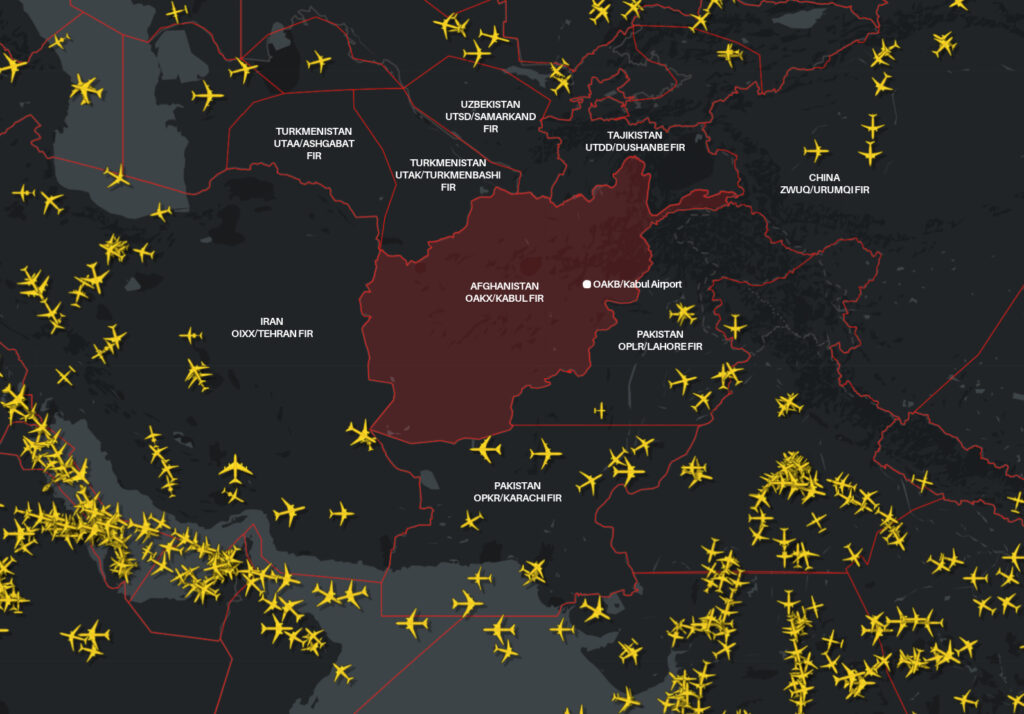US and allied forces have now pulled out of Afghanistan, and the Taliban have taken control of the country. Afghanistan’s airspace is now effectively closed to overflights – the OAKX/Kabul FIR is uncontrolled, and overflying traffic should route around the country.
Overflights
For overflights of the region, flights between Europe and parts of Asia will be those most affected by the effective closure of the OAKX/Kabul FIR. All major international airlines have now stopped using Afghanistan’s airspace for overflights, most electing to route south via the airspace over the United Arab Emirates and Arabian Sea off the south coast of Pakistan.

Map source: flightradar24.com
However, there are risk warnings to consider for the airspace here too. Several countries have warnings in place for Iran’s airspace (the OIIX/Tehran FIR), including a total flight ban by the US, which were issued following the shoot-down of Ukraine Int Airlines flight 752 over Tehran in Jan 2020. The southern part of Saudi Arabia’s airspace (the OEJD/Jeddah FIR) carries risk as well, with increasing Houthi drone and missile attacks over the past year.
To the north of Afghanistan, the options for overflights are fairly limited – via Kyrgyzstan, Kazhakstan, or even farther north via Russia. So these are not really practical unless operating from northern Europe to China, Hong Kong, Japan, etc.
Airspace Warnings
Following the Taliban takeover, several countries have updated their airspace warnings for Afghanistan. The FAA now bans US operators from Afghanistan’s airspace, only permitting overflights on airways P500 and G500 in the far east of the OAKX/Kabul FIR. EASA, along with authorities in several western countries, are now advising operators to avoid Afghanistan’s airspace entirely.
 At SafeAirspace.net we are now listing Afghanistan as Level One: Do Not Fly. Check here for a full briefing.
At SafeAirspace.net we are now listing Afghanistan as Level One: Do Not Fly. Check here for a full briefing.
More on the topic:
- More: July 2024: Afghanistan Overflight Update
- More: Aug 2023: Who wants to overfly Afghanistan?
- More: Afghanistan Update – September 2021
- More: The India-Pakistan Conflict: Impact on Flight Operations
- More: FAA issues Emergency Order for Afghanistan (Updated)
More reading:
- Latest: Teterboro: RIP the RUUDY SIX
- Latest: 400% increase in GPS Spoofing; Workgroup established
- Latest: GPS Spoofing WorkGroup 2024
- Safe Airspace: Risk Database
- Weekly Ops Bulletin: Subscribe
- Membership plans: Why join OPSGROUP?











 Get the famous weekly
Get the famous weekly 





